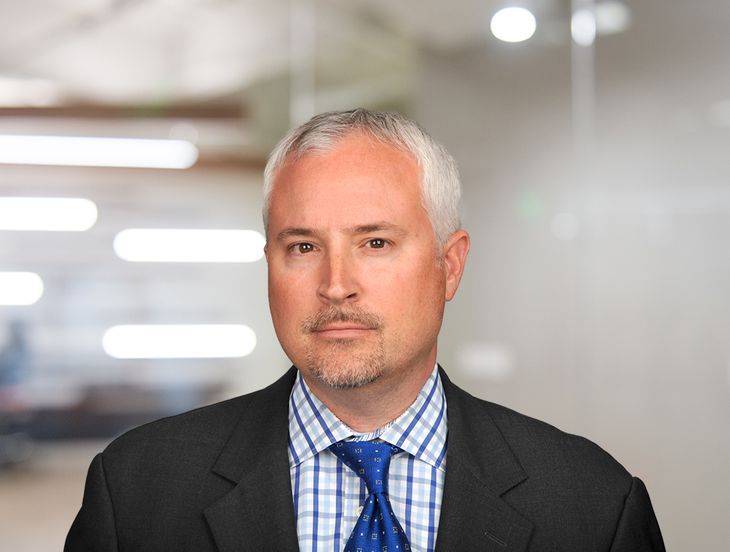The State of the Union for PEOs and Staffing: 7 Notable Trends Revealed at FP’s PeopleLaw Conference
Insights
3.13.24
The lead session at the recent FP PeopleLaw Conference was by far the most popular and highest rated – and with good reason. Attendees heard an exclusive State of the Union report from Brittany Sakata, General Counsel for the American Staffing Association (ASA), and Pat Cleary, the outgoing President and CEO of the National Association of Professional Employer Organizations (NAPEO). Don’t worry if you weren’t able to attend, as we’ll give you a solid overview of the seven most significant trends discussed there – along with thoughts from Casey Clark, the new CEO and President of NAPEO. But to make sure you hear next year’s edition, make sure to hold March 3 to 6, 2025 on your calendar for our next PeopleLaw Conference at Terranea Resort in Southern California.
1. Staffing Turnover Held Steady in 2023 – Expect More of the Same
2023 marked the sixth straight year that staffing turnover remained over 400%. Meanwhile, the last six years have seen the average staffing placement last between 9.6 and 10.1 weeks per worker. Sakata sees no reason why we won’t see similar numbers in 2024.
These numbers interpreted? Companies looked to remain flexible in the post-COVID era and workers were eager to move on and grab different opportunities when they arose. Businesses and workers have each become more cautious in a high interest rate environment. However, the labor market remains healthy in 2024 and staffing firms need to remain ready to react to the constant churn and fluid nature of the business.
2. PEOs Should Continue to Enjoy Boom Times
Cleary painted a very rosy picture of the PEO industry as he steps aside after a 12-year run at the helm. Over 200,000 small and mid-sized companies use the services of a PEO, leading to over 4.5 million worksite employees. The last decade has seen a four-fold increase of industry revenue, from $60 billion in 2012 to over $250 billion in 2022. In that same decade – which saw a 40% increase in worksite employees – PEOs enjoyed a 150% increase in revenue and a 200% increase in profitability.
And the future is just as bright. Clark notes that the industry has seen a 44% increase in awareness in just the past five years, and – most encouraging of all – eight out of 10 non-PEO clients say they are interested in exploring the PEO model as they learn about it.
3. Professional and Business Services Set to Overtake Healthcare – But Keep an Eye on Hospitality
Sakata reported that 2023 saw a major milestone when it comes to employment. Bureau of Labor Statistics projections foresee jobs in the professional and business services industry overtaking jobs in the healthcare industry by 2032, with each seeing over 22 million workers.
Together, these two industries account for somewhere around one out of every job, and this means they’ll remain dominant forces in the staffing world. But Sakata notes there is one to keep an eye on: leisure and hospitality. This industry ranks fourth for total employment by 2032 (behind state and local government operations) at over 16 million jobs. “The post-COVID hospitality boom has been a major factor in employment into 2024 and will remain a major component of employment in the years ahead,” said Sakata.
4. AI Education Campaign Ongoing
Sakata noted that workers in Gen Z are increasingly comfortable using AI – especially Generative AI – to help them with their day-to-day work tasks. Unfortunately, most lawmakers are not of Gen Z age and are not as familiar with GenAI. And when these lawmakers draft proposed laws seeking to regulate AI in the workplace without fully understanding the consequences, problems can arise. Enter ASA.
Sakata noted that her organization started an education campaign in 2023 to help educate lawmakers and regulators about the benefits of AI in hopes this will assist them in their efforts. ASA is also educating employers new to AI about the need to conduct audits to ensure their use of their technology is free of bias. This campaign will continue in 2024, with ASA helping to lead the charge when it comes to the responsible use of AI – and the appropriate regulation of this technology.
And NAPEO is heavily involved in this area, too. Many of its recent local and regional leadership conferences and leadership offerings have focused on educating members about practical AI uses and risks to take into account. The organization has also charged its Cyber Committee with monitoring and advising association leadership on all aspects of AI. There are countless efficiencies and services that AI will bring to the PEO community, with NAPEO leading the way.
5. Consolidation is Here to Stay
The leaders of both organizations saw consolidation remaining a hot topic in 2024 and beyond.
Cleary likened the current state of affairs for PEOs to the way regional airline carriers consolidated from many hundreds to just 14 or so over the past 30 years. “I don’t think we’ll see quite that severe a consolidation anytime soon,” he said, “but momentum is there for a continued round of acquisitions throughout 2024.” Fewer players in the industry is not a bad thing, he said – especially since the overall number of employees working through PEOs will continue to rise for the foreseeable future.
Sakata said that consolidation won’t hit the staffing industry quite so hard. After all, there are some 26,000 staffing companies in the nation operating over 49,000 offices, and that number won’t be plummeting anytime soon. But she does see some industry-specific consolidation making waves in the near future.
For example, in the healthcare field, Sakata sees entire wards being filled with staffing personnel instead of just seeing staffing filling in to help out when the one-off nurse needs time off for personal leave. The same holds true in the light industrial field, where she is increasingly seeing companies looking to outsource entire lines of business. These are just two of the areas where she could see a greater emphasis on consolidation in 2024.
6. Remote Workers Present Challenges – and Opportunities
The remote work experience is not going away anytime soon. And as an increasing number of remote employees move to states outside of where their employer is located, employers are finding themselves asking a multitude of compliance questions. Suddenly, small businesses that don’t have the capacity or resources to juggle all of the challenges springing from a remote workforce are forced to comply with laws and regulations in a variety of states. This is prime territory for PEOs and staffing firms, able to serve the needs of these small and mid-size businesses that otherwise would not be able to nimbly and efficiently serve their workers.
7. Speedbumps Ahead
What are the biggest challenges facing the staffing and PEO industries in 2024? Cleary, Clark, and Sakata agree:
- The patchwork of legal compliance measures springing up around the country will continue to get more complex in 2024, and PEOs and staffing firms will be caught in the middle. Data security, workplace privacy, paid leave, wage and hour, and minimum wage are just a few of the areas where employment laws vary significantly from state to state – and in some cases by county or city. PEOs and staffing firms can’t count on Washington, D.C., to solve their problems by creating a uniform set of standards that apply on a nationwide basis, especially since 2024 will be a year of Congressional gridlock.
- The pay equity field is one of the main areas where multistate operators will find a jigsaw puzzle of varying legal obligations in 2024. It will remain a challenge to navigate the various requirements involving pay data disclosures, demographic information, salary range notices on job postings, and other similar compliance obligations.
- The Department of Labor’s independent contractor rule that was just finalized could have a big impact on alternative human capital arrangements. Once it took effect on March 11, it makes it much more difficult for businesses to classify workers as 1099 contractors. It will impact the staffing and PEO industries differently, but for both will create uncertainty.
Conclusion
For more information, reach out to your Fisher Phillips attorney, the authors of this Insight, or any member of our PEO and Staffing Team. Make sure to subscribe to our FP Insights to make sure you don’t miss any developing news.
Related People
-
- Sheldon J. Blumling
- Partner
-
- John M. Polson
- Chairman & Managing Partner

